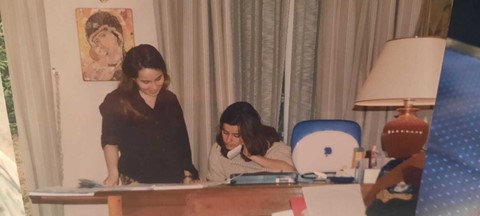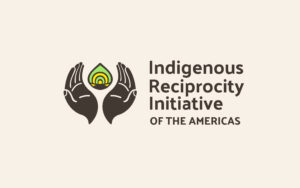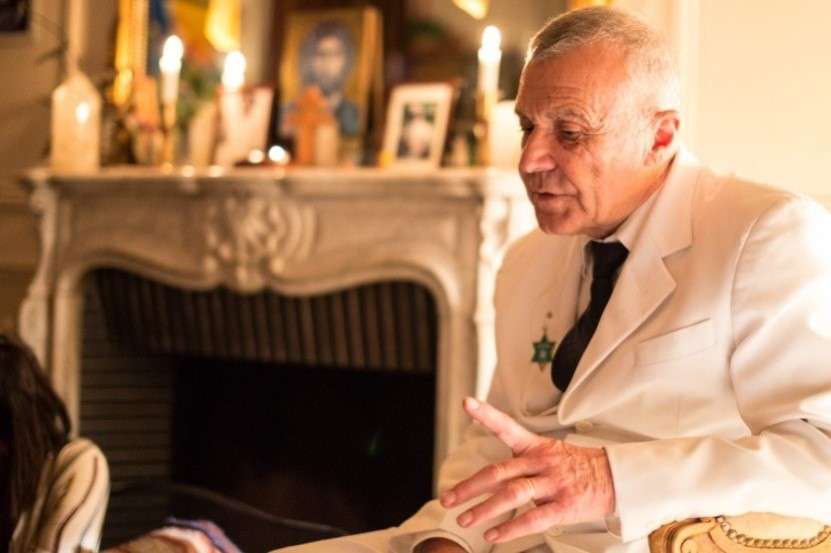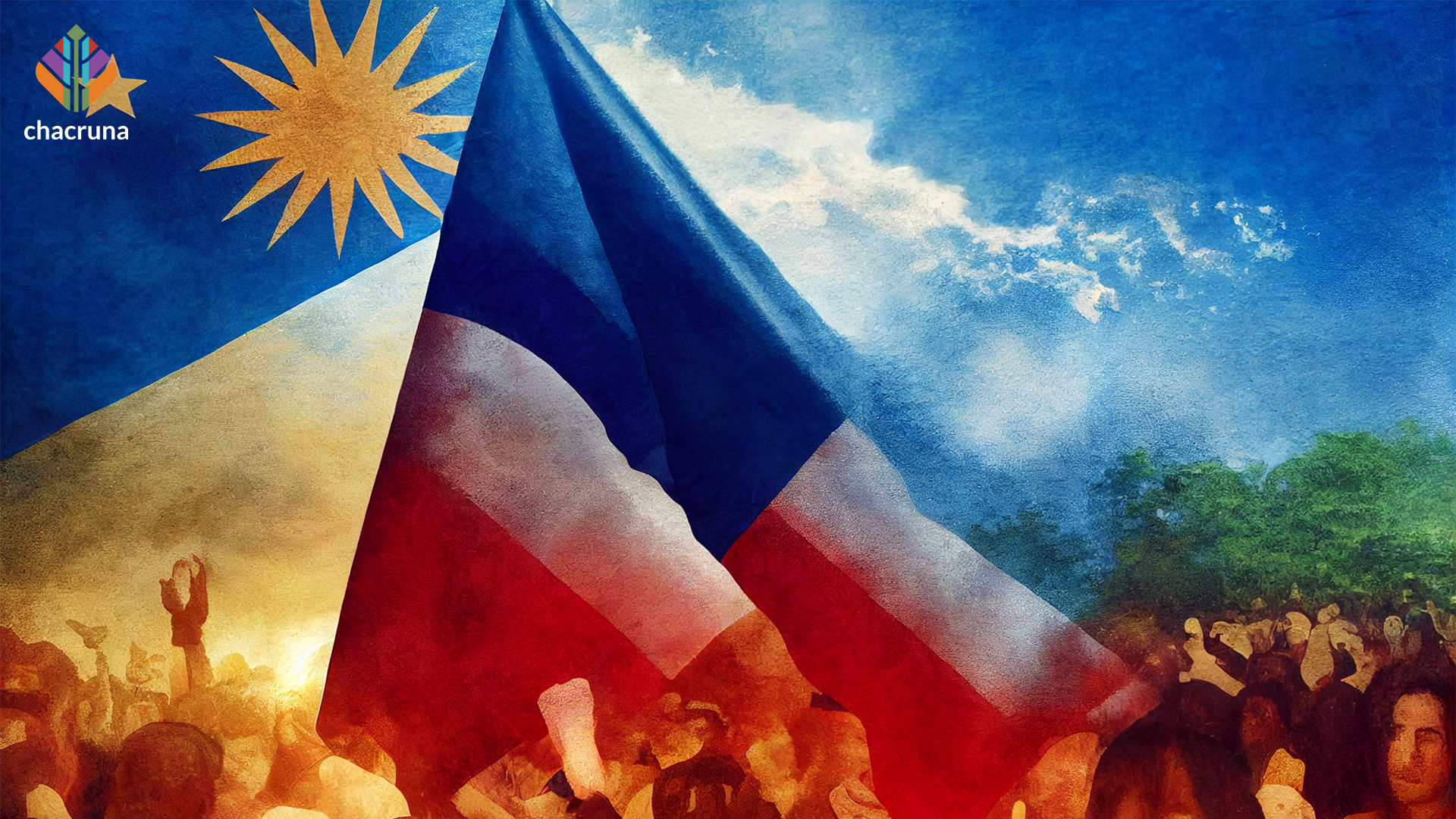- DEA Under Fire: Inefficiency or Resistance? - January 23, 2025
- Where Is the Psychedelic Movement Headed Next? - October 15, 2024
- Is Mainstreaming Psychedelics a Good Thing? - June 7, 2024
It is not a novelty that the increasing interest in ayahuasca has been accompanied by a number of legal issues, persecutions, and social stigmas. The confiscation of ayahuasca shipments and threats of imprisonment are becoming more and more frequent (Labate et al., 2023) as the world ayahuasca diaspora continues to expand (Labate & Jungaberle, 2011; Labate et al., 2017; Labate & Cavnar, 2018). Not only have ayahuasca groups and practitioners been accused of illicit drug use and drug trafficking (Feeney & Labate, 2014), they are also been framed as dangerous brainwashing cults (sectes in French).
Not only have ayahuasca groups and practitioners been accused of illicit drug use and drug trafficking, they are also been framed as dangerous brainwashing cults.
This is the case of France, in particular; like many other countries in Europe and North America, the use of ayahuasca in France began in the late 1990s, after French citizens who went to South America to drink Santo Daime founded a church in their home country. Shortly after, the first arrest took place. In 1999, the leader of the Santo Daime church in Paris, Claude Bauchet, and six other members were arrested and accused of using and trafficking DMT (Novaes & Moro, in press). They stayed in custody for three weeks, after being released on bail. At the time, Brazilian anthropologist Dr. Bia Labate joined forces with Claude Bauchet to help the Santo Daime members preparing their defense strategy.

While they were waiting for their trial in June 2001, the French government issued the first report on ayahuasca in the country. The report was made by the Commission on Narcotic Drugs. Its aim was to evaluate the potential for addiction and abuse of ayahuasca (Commission Nationale des Stupéfiants et des Psychotropes, 2001).
The commission stated that “nontraditional uses”—which, according to the report, includes all traditions except for Indigenous use restricted to the Amazon—tend to develop into cults, or ayahuasca can be used as “ethnomedicine,” thus becoming a public health problem. Three years later, two pharmacological reports on ayahuasca were published in France. The first one was carried out by the laboratory Toxlab. The report recognized that there were no cases of death related to the use of ayahuasca. Nevertheless, it claimed that it could cause psychological and psychiatric disorders. They also stated that the consumption of ayahuasca outside of its traditional framework could lead to fraud, manipulation, and “chemical submission.” They accused ayahuasca groups of being dangerous cults that drugged their followers without the proper psychological and physical assist (Pépin & Duffort, 2004, p. 83).
This understanding is also present on a report developed by the Evaluation and Information Center on Drug Addiction of Bordeaux (Commission Nationale des Stupéfiants et des Psychotropes/CEIP- Bordeaux, 2004). The document reported three alleged cases of chemical submission related to ayahuasca. We must stress, however, that, besides this unreliable claim based on alleged incidents, no evidence of an actual case of chemical submission with ayahuasca was ever presented, nor any proof that ayahuasca presents a health risk to humans.
no evidence of an actual case of chemical submission with ayahuasca was ever presented, nor any proof that ayahuasca presents a health risk to humans.
On this matter, it is important to stress that the French Health Products Safety Agency (AFSSAPS) defines chemical submission as “the administration for criminal purposes (rape, pedophilia) or criminal purposes (intentional violence, theft) of psychoactive substances without the victim’s knowledge” (AFSSAPS/CEIP-Paris, 2005, 5). It is noteworthy, therefore, that the notion of chemical submission in the reports on ayahuasca assumes an entirely new frame of “brainwashing,” distancing itself from its original meaning of inducing an altered state of conscience without the victim’s knowledge in order to commit sexual assault or theft. This new frame allowed the French government to classify ayahuasca groups as criminal organizations.
Although these highly questionable reports did not present any substantial evidence to corroborate the allegations of health risks associated with ayahuasca, they became expert evidence in the criminal trial of Santo Daime members. As a result, on January 15, 2004, the court convicted Claude Bauchet and the other six members of the group to 18 months suspended sentence for the following crimes: import, acquisition, and possession of narcotics; use of narcotics; and drug trafficking. According to the judge’s ruling: “It goes without saying that the fact that the legislation on the consumption or provision of drugs cannot be refuted under a religious cover whose sole purpose could be to bypass the legality” (Tribunal de Grande Instance de Paris, 2004, p. 16, our translation).
After being found guilty, the Santo Daime members contacted a pharmacist who was a member of the Commission on Narcotic Drugs who wrote a letter countering the claims of the court with his own expertise (Beauverie, 2004). His letter stated that ayahuasca is a decoction followed by a reduction that cannot be compared to an extraction technique for the production of DMT, which is illegal in France. This two-page document presented by the defense had a crucial role in the not-guilty verdict in the process of appeal.

Discover the Indigenous Reciprocity Initiative of the Americas
The ruling of the Paris Court of Appeals recognized that ayahuasca had not been classified as a narcotic. It also stated that “the operations of ‘decoction,’ ‘infusion,’ or ‘maceration’ could not allow one to obtain a ‘substance,’ in the sense of the Vienna Convention and the French law, since they do not allow one to isolate ‘the chemical elements and their compounds as they occur in their natural state or as they are produced by industry’” (Cour d’appel de Paris, 2005, p. 17). Therefore, in the beginning of 2005, the Paris Court of Appeals acquitted the members of Santo Daime and ended the case for lack of legal basis.
During the trials, the issue of cults and chemical submission played an insignificant role. The core of the debate was the framing of ayahuasca as a narcotic, not the practices of the groups that consume ayahuasca. In addition, by going against the decision of the Paris court, the Court of Appeal set a legal precedent for ayahuasca not being considered a narcotic in France.
Nevertheless, the impact of this decision was short-lived, as only three months later, in May 2005, the Commission on Narcotic Drugs classified all the plants and psychoactive principles present in ayahuasca as illicit (Bourgogne, 2011). The report featured the intervention of the representative of the Interministerial Mission of Vigilance and Combat against Sectarian Drifts (MIVILUDES) on ayahuasca. According to Jules Vincent (pseudonym), a member of the commission at the time, the representative of MIVILUDES made a terrifying presentation, claiming that there was a dangerous new sect on French territory called Santo Daime which promoted the use of ayahuasca, and urged the commission to intervene, banning ayahuasca. In response, Jules argued that the subject of Santo Daime being a cult or a religion was not a matter for the commission, which should limit itself to analyzing the chemical, toxicological, and pharmacological aspects of ayahuasca (J. Vincent, personal communication, July 12, 2022).
Without presenting any scientific evidence to corroborate its stance, the commission banned ayahuasca on the grounds that it had hallucinogenic effects and a potential for abuse and addiction (Commission Nationale Des Stupefiants Et Des Psychotropes, 2005). After the Commission on Narcotic Drugs’ decision, ayahuasca became illegal in France, creating a legal problem for the recently acquitted group of Santo Daime members. In the same year, the group and representatives of Takiwasi requested that the Council of State remove ayahuasca from the list of plants and substances classified as narcotics (Bauchet et al., 2005). However, the Council rejected the request, arguing that the infringement on the religious freedom, especially Article 9 of the European Convention of Human Rights, were minor, considering the risk that ayahuasca posed for public health (Conseil d’Etat, 2007).
Still, the Santo Daime members did not give up, sending multiple letters to the Ministry of Health and the Ministry of Interior asking them to reconsider the measure, and proposing a dialogue to find an alternative for ayahuasca use in France. In the majority of the cases, the letters were ignored. Other times, the requests were simply rejected without much consideration.
After almost 15 years of practicing Santo Daime in secret without any incident, Claude Bauchet was arrested again in 2019, after an anonymous tip to the authorities. He spent four days in custody, and he is currently awaiting his second trial. But now, since the ban of ayahuasca, the situation is quite different. Mr. Bauchet is a retired 75-year-old man and a French citizen who, besides being part of an ayahuasca religion, had never had any legal problems in France. Treated like a criminal by the authorities of his home country, he could face multiple years of imprisonment for practicing his religious beliefs.

Not only is the prohibitionist stance of the French government concerning, but the classification of ayahuasca religions as “dangerous cults” is highly problematic. It is important to stress that the ban on ayahuasca is a result of an unprecedented and unexpected partnership between the Ministry of Health and the MIVILUDES. Thus, a commission belonging to the Ministry of Health whose aim is to regulate the potential risks of substances from a pharmacological and toxicological standpoint decided which cultural and social practices could be considered legitimate and which should be classified as criminal acts. It is disturbing that a pharmacological commission claims the authority to define what is or not a religion. While the judicial decisions focused only on pharmacology and the legal framework of ayahuasca, the Ministry of Health left the secular arena and joined the theological debate about cults and religions, not only classifying the drink as potentially dangerous, but also stigmatizing ayahuasca groups as clandestine criminal movements.
In a blatant human rights violation, the French government hides behind unfounded accusations to curtail the freedom of its citizens. This arbitrary decision was made without presenting any evidence to support their stance and ignoring not only the available anthropological knowledge about the religious and cultural value of ayahuasca, but also the scientific data about ayahuasca’s nontoxicity. Despite their arguments on the alleged risks that ayahuasca poses to public health and order, it is clear that what is really at stake are the devices the French government uses to repress religious minorities that are not aligned with the hegemonic power of secularity (laïcité) in the country.
Chacruna Institute founded the Council for the Protection of Sacred Plants and the Ayahuasca Community Committee in order to spread awareness of ayahuasca’s journey to religious freedom and to help groups navigate legal hurdles.
Following the pioneering work of Dr. Bia Labate since the late 1990s, Chacruna Institute founded the Council for the Protection of Sacred Plants and the Ayahuasca Community Committee in order to spread awareness of ayahuasca’s journey to religious freedom and to help groups navigate legal hurdles. The most recent initiative from Chacruna, the book Religious Freedom and the Global Regulation of Ayahuasca (Labate & Cavnar, in press), is a testament to the institution’s ongoing commitment to providing a theoretical understanding around the legality of sacred plants by offering a detailed landscape of the regulation of ayahuasca worldwide, and acting as an advocate, taking a protective stance in support of ayahuasca drinkers.
To support legal effort in France, donate here.
Art by Trey Brasher.
References
Agence nationale de sécurité du médicament et des produits de santé (Afssaps) / Centres for Evaluation and Information on Pharmacodependance (CEIP)-Paris. (2005). Soumission chimique, enquête nationale [Chemical submission, national survey]. https://archiveansm.integra.fr/var/ansmsite/storage/original/application/2aa3678860194f894fc6fb43525da8b5.pdf
Bauchet, C., Bourgogne, G., Bourgogne, C., Mabit, J., Vaillant, C., & Vacandare, J. P. (2005). Recours pour Exces de Pouvoir. Memoire Introductif et Ampliatif [Remedy for excess of power. introductory and amplifying memoir]. https://www.bialabate.net/wp-content/uploads/2008/08/Ayahuasca_Appeal_Council_State_France_2005.pdf
Beauverie, P. (2004). Lettre au juge d’instruction du 20 octobre 2004 [Letter to the investigating judge of October 20, 2004]. Etablissment Public de Santé Paul Giraud.
Bourgogne, G. (2011). One hundred days of ayahuasca in France: The story of a legal decision. In B. C. Labate & H. Jungaberle (Eds.), The internationalization of ayahuasca (pp. 353–363). Lit verlag.
Commission Nationale des Stupéfiants et des Psychotropes. (2001). Plantes hallucinogenes et leurs principes actifs. No 46 du 19 avril 2001. Procès-verbal adopté à la reunion du 27 juin 2001 [Hallucinogenic plants and their active principles. No 46 of April 19, 2001. Minutes adopted at the meeting of June 27, 2001]. https://www.bialabate.net/wp-content/uploads/2018/02/CommissionNationaleStupefiantsPsychotropesMinutesMeeting2001.pdf
Commission Nationale Des Stupefiants Et Des Psychotropes. (2005). Procès-verbal de la 62ème réunion du 16 décembre 2004. Adopté à la réunion du 24 février 2005 [Minutes of the 62nd meeting of December 16, 2004. Adopted at the meeting of February 24, 2005]. https://archiveansm.integra.fr/var/ansm_site/storage/original/application/f79919183626ba37e421a535f9b9dca6.pdf
Commission Nationale des Stupéfiants et des Psychotropes/CEIP- Bordeaux. (2004). Rapport 2004: Ayahuasca.
Conseil d’Etat. (2007). Republique Française au Nom du Peuple Français. No 282100 [French Republic in the Name of the French People. No. 282100]. https://www.bialabate.net/wp-content/uploads/2008/08/Ayahuasca_Ruling_Council_State_2007.pdf
Cour d’appel de Paris. (2005). Dossier n 04/01888, Arrêt du 13 janvier 2005, 10ème Chambre, Section B [Case No. 04/01888, Judgment of January 13, 2005, 10th Chamber, Section B]. https://www.bialabate.net/wp-content/uploads/2008/08/versao2.pdf
Labate, B. C., Antunes, H. F., Assis, G. L., & Cavnar, C. (2023). A call for public support against the current demonization of ayahuasca practices in Spain. Chacruna. https://chacruna.net/a-call-for-public-support-against-the-current-demonization-of-ayahuasca-practices-in-spain/
Labate, B. C., Cavnar, C., & Gearin, A. K. (Eds.). (2017). The world ayahuasca diaspora: Reinventions and controversies. Routledge.
Labate, B. C., & Cavnar, C. (Eds.). (2018). The expanding world ayahuasca diaspora: Appropriation, integration and legislation. Routledge.
Labate, B. C., & Cavnar, C. (Eds.). (in press). Religious freedom and the global regulation of ayahuasca. Routledge.
Labate, B. C., & Feeney, K. (2014). The expansion of Brazilian ayahuasca religions: Law, culture and locality. In B. C. Labate & C. Cavnar (Eds.), Prohibition, religious freedom, and human rights: Regulating traditional drug use (pp. 111–30). Springer.
Labate, B. C., & Jungaberle, H. (Eds.). (2011). The Internationalization of ayahuasca. Lit Verlag.
Novaes, C., & Moro, M. R. (In press). The landscapes of ayahuasca in contemporary France. In B. C. Labate & C. Cavnar (Eds.), Religious freedom and the global regulation of ayahuasca. Routledge.
Pepin, G., Duffort, G. (2004). Ayahuasca: liane de l’âme, chamanes et soumission chimique [Ayahuasca: Vine of the soul, shamans and chemical submission]. Annales de Toxicologie Analytique, 16(1), 76–84.
Tribunal de Grande Instance de Paris. (2004). Jugement du 15 janvier 2004 [Judgment of January 15, 2004.]. https://www.bialabate.net/wp-content/uploads/2017/12/High-Court-of-Paris-15-January-2004-Bauchet-case.pdf
Take a minute to browse our stock:
Did you enjoy reading this article?
Please support Chacruna's work by donating to us. We are an independent organization and we offer free education and advocacy for psychedelic plant medicines. We are a team of dedicated volunteers!
Can you help Chacruna advance cultural understanding around these substances?














